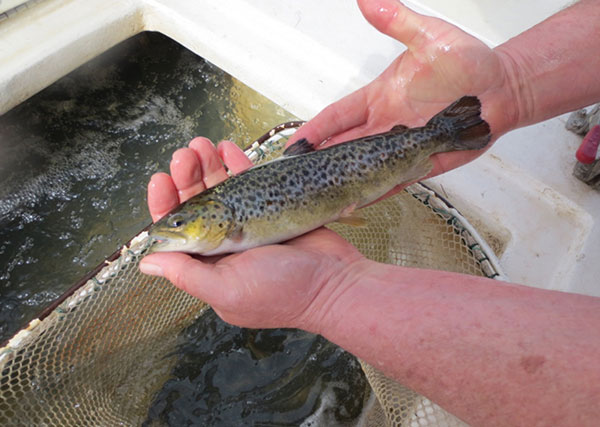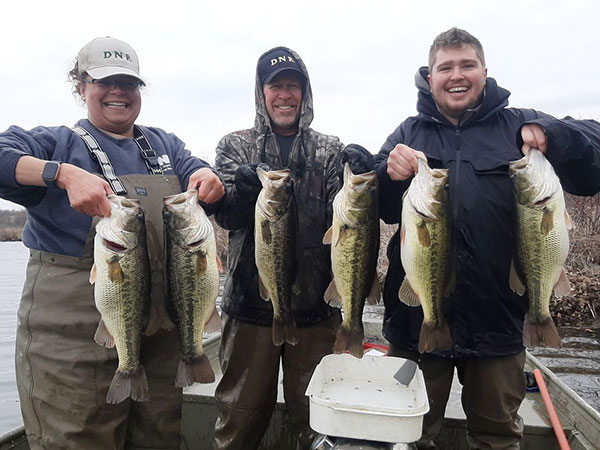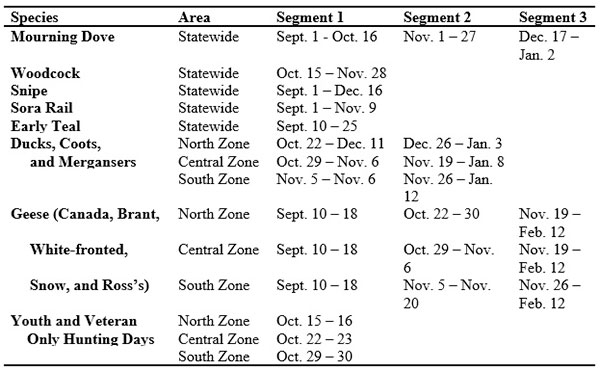- Details
IDNR Report
 Brown Trout
Brown Trout
In late May, biologists with the DNR Division of Fish & Wildlife stocked two bodies of water in northeast Indiana with roughly 3,000 brown trout averaging 8 inches in length.
The trout, obtained from Wolf Creek National Fish Hatchery in Kentucky, were stocked into the Oliver Lake chain in LaGrange County (Oliver, Olin, and Martin lakes) and the Pigeon River at county roads 327 and 175 in Steuben County.
- Details
IDNR Report
Indiana Conservation Officers are investigating the death of a Robert Guinnup, 72 of Monticello after his body was recovered from the Tippecanoe River in White County over the weekend.
At approximately 6:13 p.m., White County Dispatch received a 911 call of a possible drowning that occurred just upstream from the Blue Water access site on the Tippecanoe River.
- Details
IDNR and MDNR Report
Indiana offers four Free Fishing Days each year to provide Indiana residents the chance to fish without the need for a fishing license and next weekend is one of those.
The weekend of June 4 and 5 marks two of those days. Take the weekend to spend time by the water with family or friends. The special weekend is open only to Indiana residents.
Michigan offers its free fishing weekend June 11-12. Unlike Indiana, Michigan’s free fishing weekend is open to non-residents as well. Michigan offers waives its passport requirements for boating access sites.
- Details
By Louie Stout
 Indiana fish biologists with Hamilton Lake Bass
Indiana fish biologists with Hamilton Lake Bass
A crappie and northern pike survey at Hamilton Lake coincidentally revealed better news about bass and bluegill.
Indiana fish biologists surveyed the popular northeast Indiana lake earlier this spring. The lake hadn’t been surveyed since 2004 so fish managers wanted to evaluate the crappie and pike while they were still shallow.
The lake historically has had a big population of slow growing and stunted pike so the DNR instituted regulations for the lake a few years ago that removed the size limit (24 inches statewide). You can keep five, but only one 30 inches and over.
It must be working. Biologists captured 50 percent fewer this year than they did in 2008. The also saw fish up to 36 inches which was bigger than they saw the last time.
“The average size of the females was bigger so we might be seeing a change,” said District Biologist Matt Horsley. “It will take some time to see the bigger fish population develop, but overall, I was pleased.”
The crappie catch was disappointing. Horsley said Hamilton has been known as a phenomenal crappie fishery, but his crew had a tough time finding them.
“The size structure of those we did find was poor, he said. “Most were in that 6- to 8-inch mark. It could be a down year, or it could be a matter of timing and the fish were just starting to move in. But normally, we see a wide range of year classes.”
BLUEGILL
Previous biologists have complained that the lake lacked good numbers of quality bluegill, but Horsley findings were to the contrary.
Although the bluegill weren’t being targeted, his crew had one net with 3,000 to 4,000, many which were 7 to 8 inches.
“Same with redear,” said Horsley. “Really nice ones.”
BASS
Nor were the nets targeting bass, but they showed up in surprising numbers.
And big ones.
“We saw fish up to 6 pounds and several in that 5 to 6 pound class,” said Horsley.
The lake has been a popular tournament site and the incidental catch of bass proved why.
The DNR crew will return to the lake this month to take a closer look at the bass population and plans to do an overall survey of the lake in June.
- Details
IDNR Report
Indiana’s migratory bird hunting seasons for 2022-2023 have been submitted to the US Fish and Wildlife Service. These seasons include those for mourning doves, waterfowl (ducks, coots, mergansers, and geese), woodcock, snipe, and sora rails.
The daily bag limit for all dark geese (i.e., Canada geese, white-fronted geese, and brant) in the aggregate is five, with no other limitations by species, meaning hunters can harvest any amount of each species if the total does not exceed five for the season. This may include five Canada geese during the entire season. The daily bag limit for light geese (snow and Ross’s geese) remains 20.
There are no changes in duck bag limits from 2021-22. This includes the scaup daily bag limit, which is one during the first 15 days of the season and two for the remainder of the season.
The seasons are as follows:
 2022-23 Indiana Migratory Bird Seasons
2022-23 Indiana Migratory Bird Seasons


